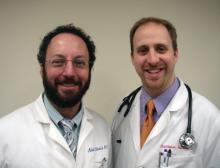"History doesn’t look like history when you are living it" – John Gardner
There is a quiet revolution occurring in health care technology: mobile health apps. Many experts feel that the development of mobile heath applications (dubbed "mHealth") is approaching its tipping point, where it will begin to have important effects on how health care is delivered and, more importantly, on patient outcomes.
The context that has driven the excitement about mobile health care is a world in which cellular technology has become virtually ubiquitous. In fact, it has been said that there are more people on the planet using wireless devices than using toothbrushes. There are now more than 5 billion wireless subscribers, with more than 70% of them residing in low- and middle-income nations. This creates a fertile arena for the development of applications focused on those who have the most to gain from excellent health care: the patients.
Conventional medicine is based on the concept that people will come in for monitoring and advice from an expert – the physician – about how to manage their health and disease. This can be thought of as a 100-yard dash, with patients running only the most important part of the race – the "last 10 yards."
But now, the ubiquity of mobile devices that can collect information, analyze it, and provide more meaningful information to physicians can enhance patient involvement and commitment to their own outcomes.
Let us go over some examples of how this is being translated into reality.
Worldwide Initiatives
Based on the potential to improve health in developing countries, the United Nations Foundation has formed the mHealth Alliance, which seeks to utilize mobile devices to improve health outcomes. A recent survey by the World Health Organization showed that the majority of countries have mHealth initiatives in place. However, in many countries those initiatives are small and still experimental in nature.
The promise is the opportunity to deliver a sophisticated level of care to the 57 countries in the world that have a health care provider shortage (with a deficit of more than 2.4 million providers). In practicality, because wireless Internet services are available in most areas in these countries, it is hoped that this connectivity will penetrate to those areas and provide health care expertise where it would otherwise not exist.
Patient Compliance
At the forefront of attempts to involve patients in the "last 10 yards" are initiatives that address patient compliance.
Many medical interventions for chronic disease – including hypertension, HIV, heart failure, and diabetes – have been shown to be effective in controlled studies, but fall short in real world use due to difficulties with patient adherence to prescribed regimens. Interventions as simple as reminders through voice or text messaging can encourage adherence to prescribed medical regimens, or prompt people to keep their medical office appointments. One study showed that nonattendance rates for office visits were lower among patients who received text message reminders.
An excellent example of care enhanced by mobile health apps is the WellDoc DiabetesManager (www.welldoc.com). This allows patients to enter data that include blood glucose, carbohydrate intake, medications, and other information on their mobile device and then receive automated educational, behavioral, and motivational messaging specific to the entered data.
In addition, there is both a patient and provider Web portal with access to patient-specific information, and the provider portal even offers decision support linked to evidence-based guidelines.
The effectiveness of this application was studied in a randomized trial, which found that the group that had care coordinated with the mobile device had a 1.9% decline in HbA1C over 1 year, vs. 0.7% in the usual-care group (P less than .001) (Diabetes Care 2011;34:1934-42). This improvement in the A1C result is in the same range as that seen with most of the new diabetes medications that have come out over the last few years.
Another exciting application has been showcased by CareSpeak (www.carespeak.com). The mobile medication manager utilizes text messaging to enhance compliance with taking medications. This idea might not seem important at first – until you understand CareSpeak’s premise that 40% of health care expenditures are incurred by only 5% of the population, and that if enhanced adherence to prescribed protocols helps to improve outcomes in these people, it will lead to improved quality of life and decreased cost.
The benefits are most clear where the risk of noncompliance is highest. The company performed a study of pediatric liver transplant patients and utilized text-messaging reminders to encourage patients to adhere to medication regimens. Messages were sent to the patient or caregiver when it was time to take a medication. If the patient didn’t reply with a confirmation that they took their medication within 30 minutes, another follow-up message was sent to the parent or other caregiver alerting them to the potential lack of compliance.


